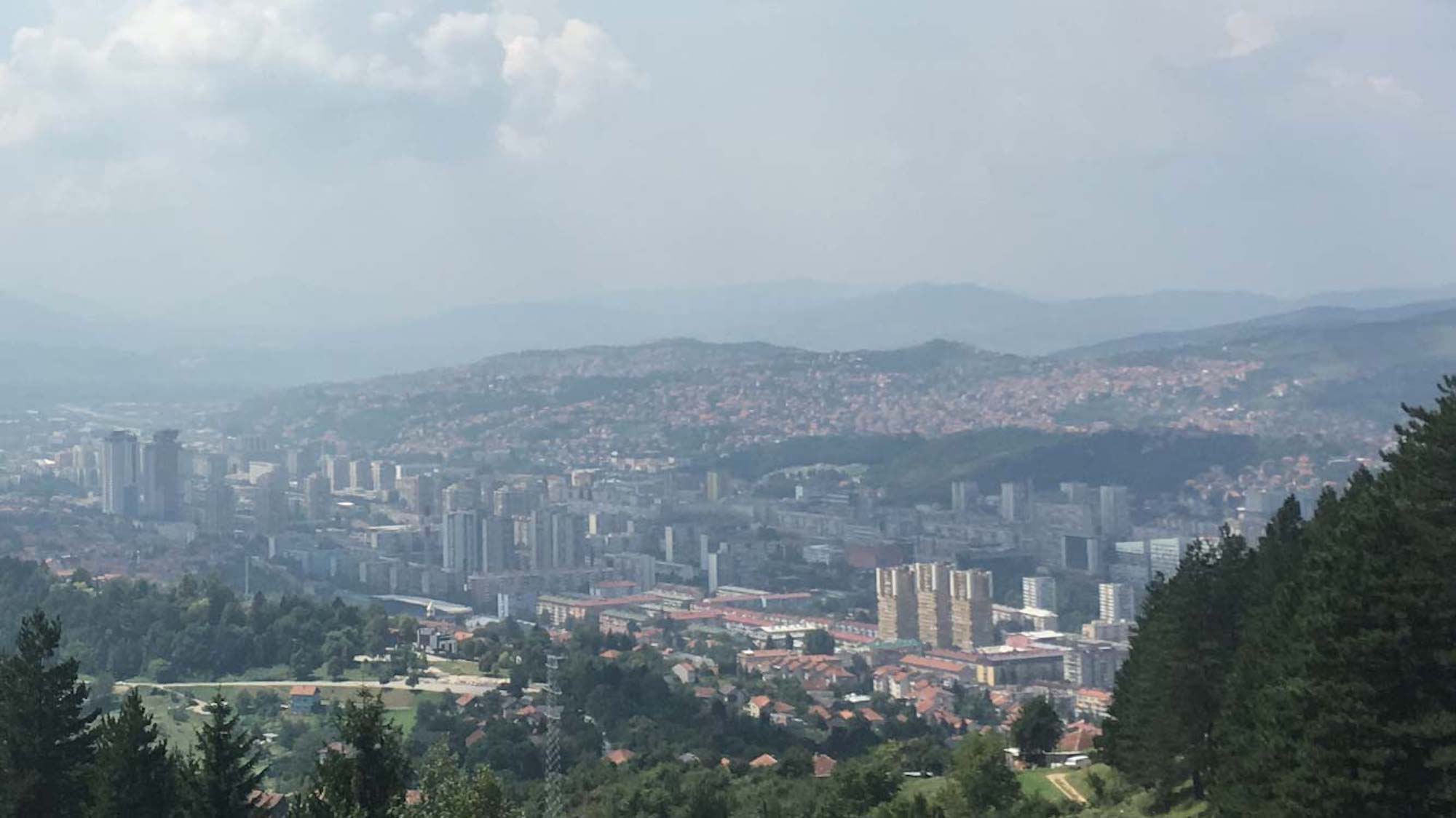Aprils in Sarajevo
Blog by Badema Pitic (VHA Research Officer at the Center)

On this day, 27 years ago, my city of Sarajevo became a besieged city, and remained such for the following four years. A seven-year old at the time, I remember those first days of April of 1992 well. On one of them, my family’s Yugo 45 – an iconic car model of the former Yugoslavia – broke down right next to the Kasarna Maršala Tita (military barracks), where the U.S. Embassy is located today. Without a car, we could not go home that night, so we returned to my grandparents’ house. Later that night, the Bosnian Serb forces took away all the Bosnian Muslim men from our street and killed them. That Yugo 45, which we sold for some firewood months later, saved my father. This is how I remember that April of 1992.
April tends to be an important month in the history of Sarajevo. 51 years before the siege of Sarajevo, the German forces started shelling the city on April 6, 1945. On April 15, 1941, the Germans entered the city, and on April 24 Sarajevo became part of the Nezavisna Država Hrvatska (NDH), a Croatian Nazi puppet state. On April 6, 1945, the Yugoslav National Liberation Army liberated Sarajevo. From 1941 to 1945, the majority of the Sarajevo’s Jewish community was erased. After World War II, approximately 2,400 Jews returned to the city, and today, this community numbers around 1,000 members.
In the second half of the 1990s, right after the end of the most recent war in Bosnia, 55 Sarajevan Jews gave their testimonies to the USC Shoah Foundation. Their stories of the Holocaust are intermingled with their stories of the siege of my city. Those whose parents joined the Partisan resistance in the 1940s proudly resisted the siege of Sarajevo in the 1990s.
Such is the story of David Kamhi, a professor at the Sarajevan Music Academy – my alma mater, and a former cantor of the Jewish synagogue in Sarajevo. In 1941, a Bosnian Muslim family assisted Kamhi, his mother and his brother, in fleeing Sarajevo. The family reached the city of Mostar disguised in Muslim clothes, him wearing a Turkish fes (hat), and his mother wearing a burka. The Ustashe caught them in Mostar, and they ended up in an Italian-held camp on the Croatian island of Rab. Upon Italy’s capitulation in 1943, Kamhi’s mother joined the Partisan resistance movement, and he and his brother spent the rest of the war in a number of Partisan children’s camps.
In the 1990s, Kamhi followed in his mother’s footsteps and fought for Sarajevo’s liberation from the Bosnian Serb occupying forces. Right before the beginning of the siege, Kamhi was in Madrid, Spain. “I came back on April 2nd,” he says in his testimony. “I knew a war was coming. I came back. I wanted to be here.” Kamhi immediately joined the Bosnian Army to defend Sarajevo. To the interviewer’s question about what it means to defend Sarajevo, Kamhi responds, “It means defending my city of birth. It means defending everything. It means defending Bosnia. And Bosnia is everything to a Bosnian.”
This April, my city is a free city.